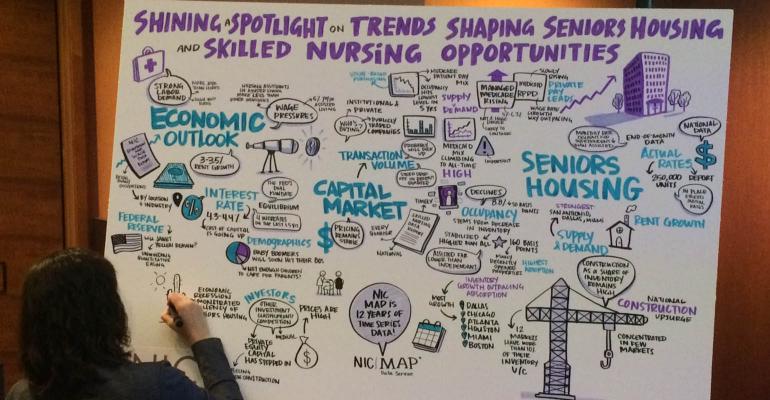The National Investment Center for Seniors Housing & Care (NIC) closed its fall 2017 conference on Thursday, with more in-depth analysis of the forces driving the seniors housing market and advice on how to navigate today’s environment. Here are some takeaways from Thursday’s sessions:
- There has been a slowdown in investment sales transactions for seniors housing properties over the past few quarters, according to Bill Kaufman, senior principal for research and analytics with NIC. Part of the slowdown can be attributed to publicly-traded REITs stepping away from acquisitions as properties have become more expensive and the REITs have been busy absorbing the assets bought during their most recent shopping spree, added Beth Burnham Mace, chief economist and director of outreach with NIC. However, transaction volume might show an increase in the third quarter data as several sizeable deals have been announced in recent months and are due to close, noted Kaufman.
- Looking at seniors housing subsectors, prices on independent living facilities have stayed steady over the last few years, while prices on skilled nursing facilities have increased, Kaufman said.
- Rapid inventory growth has had an impact of occupancy rates at seniors housing facilities, and that growth has been particularly evident in certain markets, including Dallas, Chicago, Minneapolis, Atlanta, Miami and Boston, noted Lana Peck, senior principal for research and analytics with NIC. Overall, 30 percent of inventory growth in the past four quarters took place in just seven markets, Peck said.
- On the flip side, the strongest absorption rates over the past year were observed in San Antonio, Texas, Dallas, Miami, Minneapolis, Atlanta and Phoenix, according to Peck.
- In spite of all this growth, John Moore, chairman and CEO of Atria Senior Living, a property manager for seniors housing communities, noted that the industry still hasn’t achieved the scale necessary to handle the uptick in older adults that will need care in the next few years. “We are still a fledgling industry, we are still mostly driven by entrepreneurs,” he said. “The wave is coming.”
0 comments
Hide comments

